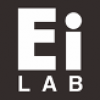One could argue that LEGO turned its business model around by creating more value for customers while using less resources. They first reengineered their operations improving the backstage of their Business Model (Canvas). Then, they turned to customers and boosted value creation.
Operations focus: Streamlining activities and using the resources in the backstage of the Business Model (Canvas):
LEGO first streamlined its operations and decreased the complexity of its manufacturing processes. In particular, they reduced the number of different LEGO bricks by eliminating those that were difficult and costly to source. LEGO focused on a standard design of their bricks, which made their operations more nimble and allowed them to react quickly to market trends.
LEGO also decided to get rid of LEGO branded products that were tangential to their business and weren’t profitable.
LEGO expanded its business model only after establishing a robust operational base, ensuring a profit on the sets they were selling. Then they turned to customers and designed new and improved value propositions that would create more value for their customers.
Customer focus: Creating more value with new value propositions in the frontstage of the Business Model (Canvas):
Lego adapted their kits to the dreams and desires of kids in the 21st century (e.g. LEGO Mindstorms include smart bricks with both software and hardware to build customized robots).
LEGO expanded to new markets by designing sets for undeserved segments (e.g. LEGO friends targeting girls) and expanding to emerging countries where their growth was soaring.
